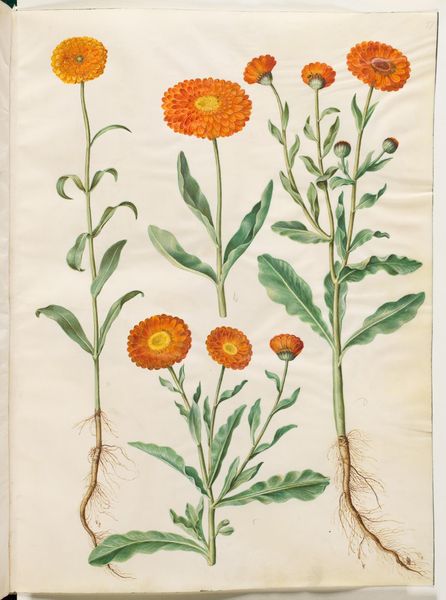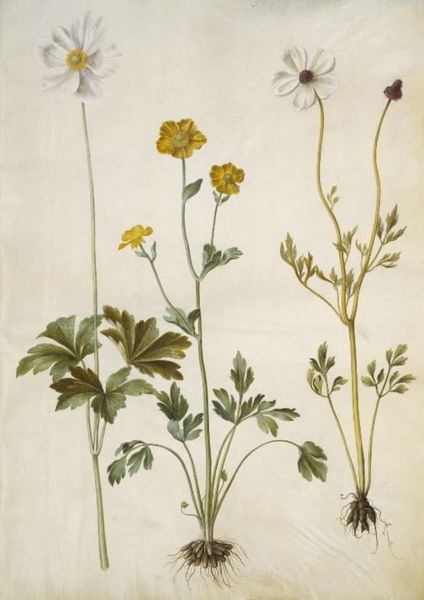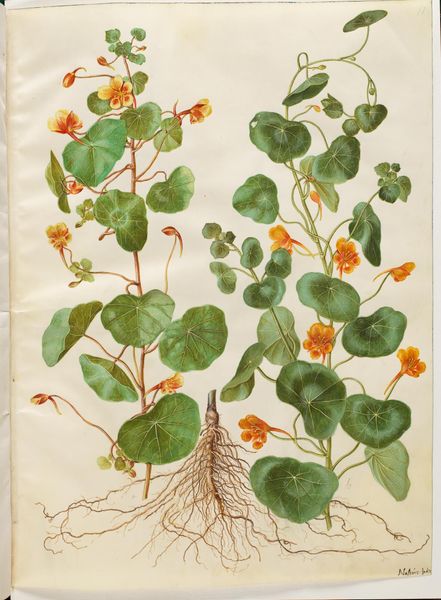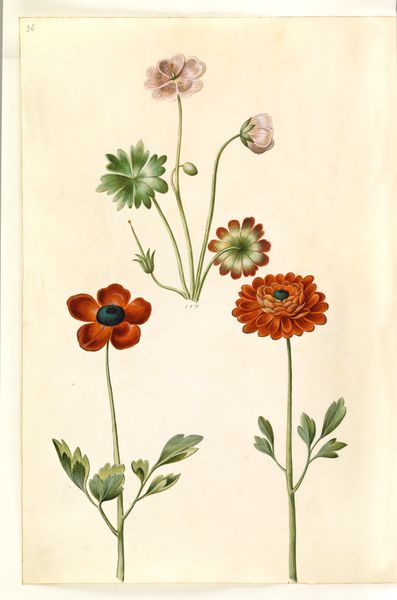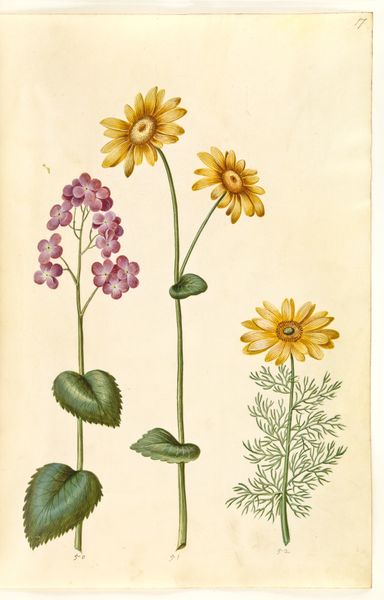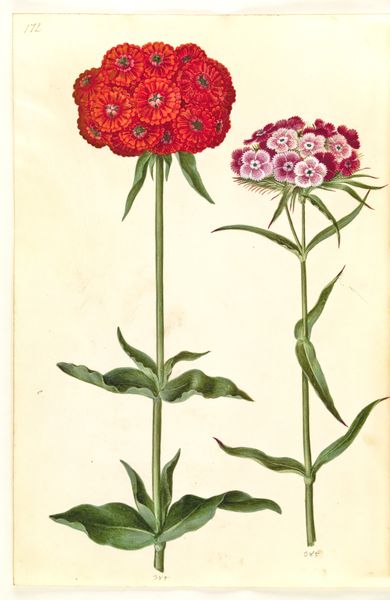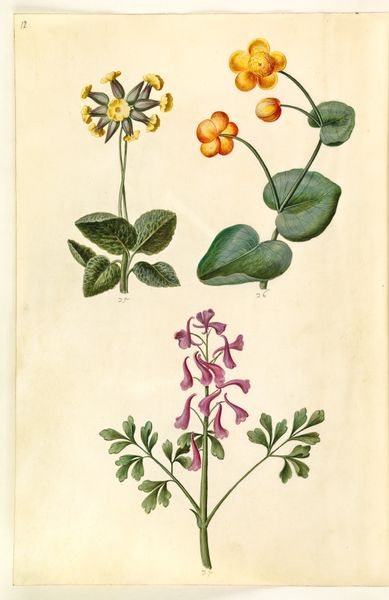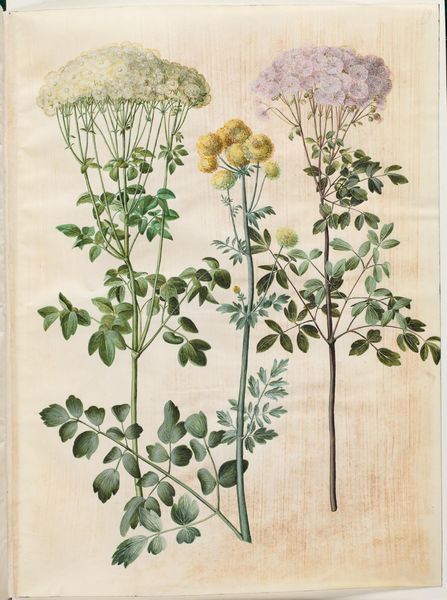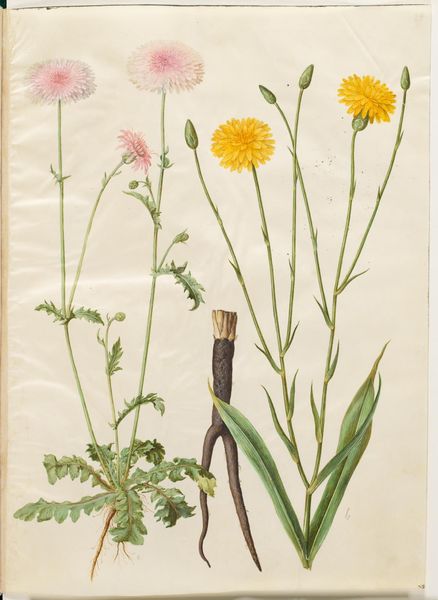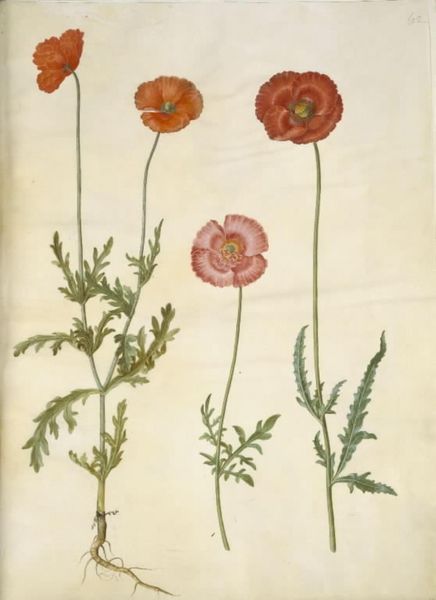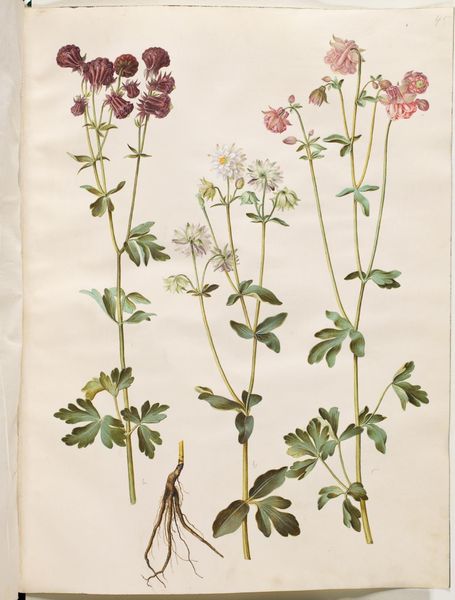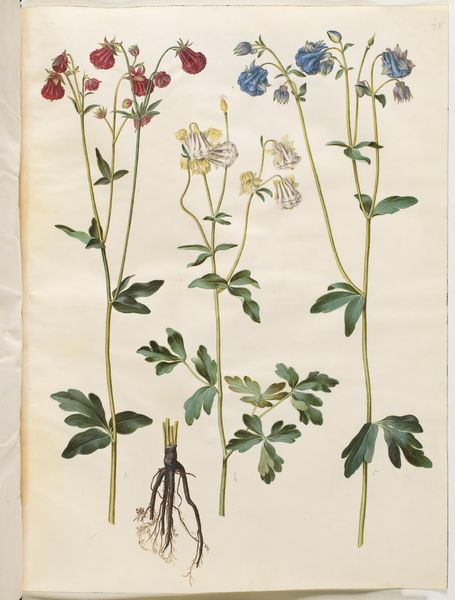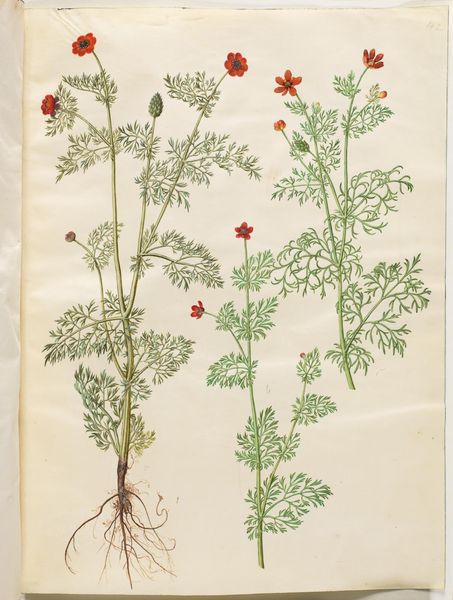
Pilosella aurantiaca (pomerans-høgeurt); Caltha palustris (eng-kabbeleje) 1649 - 1659
0:00
0:00
drawing, gouache
#
drawing
#
gouache
#
botanical art
#
realism
Dimensions: 505 mm (height) x 385 mm (width) (bladmaal)
Curator: This delightful botanical study, entitled "Pilosella aurantiaca; Caltha palustris," hails from between 1649 and 1659, attributed to Hans Simon Holtzbecker. It employs gouache on paper. Editor: My initial reaction is that this image evokes the methodical precision of a scientist paired with an undeniably decorative, almost textile-like aesthetic in how the flora are presented. Curator: The choice of gouache, an opaque watercolor, is critical here. It allows Holtzbecker to build up layers of color, achieving remarkable detail in the veining of the leaves and the subtle gradations of the flower petals. We can imagine the artisanal sourcing of pigments during this period, with plant dyes being integral to production costs. Editor: Indeed. Notice the composition: a series of vertically arranged plants occupying nearly all the pictorial space, emphasizing their forms through shape, color, and a clear perspectival construction. I read it as a scientific effort to represent essential plant features rather than attempting an impressionistic or landscape depiction. Curator: I think we can also think about Holtzbecker’s labour. Producing art like this often happened through apprenticeship; what kind of access and labour conditions are reflected here? Did the artist have patronage from court circles perhaps, or botanical societies, to create such detailed works, which could be understood as a visual means to collect and trade species across countries and continents? Editor: Your point regarding patronage raises a fascinating angle about the artwork’s social and historical value. But returning to the surface, the crispness of the outlines against the parchment creates a very striking figure/ground dynamic, almost lifting these plant specimens off the page, into the viewer’s space. Curator: A very precise observation. Knowing this piece resides within the collection of the SMK - Statens Museum for Kunst suggests its importance as part of documenting Denmark's botanical history. Its preservation contributes greatly to our current understanding. Editor: Reflecting on its clean lines and vibrant color even across centuries, I'm left appreciating its objective qualities alongside its enduring aesthetic appeal. Curator: It strikes me as a fine example of art that intertwines meticulous observation with the cultural impulse to collect, record, and, perhaps, even subtly dominate the natural world.
Comments
No comments
Be the first to comment and join the conversation on the ultimate creative platform.
